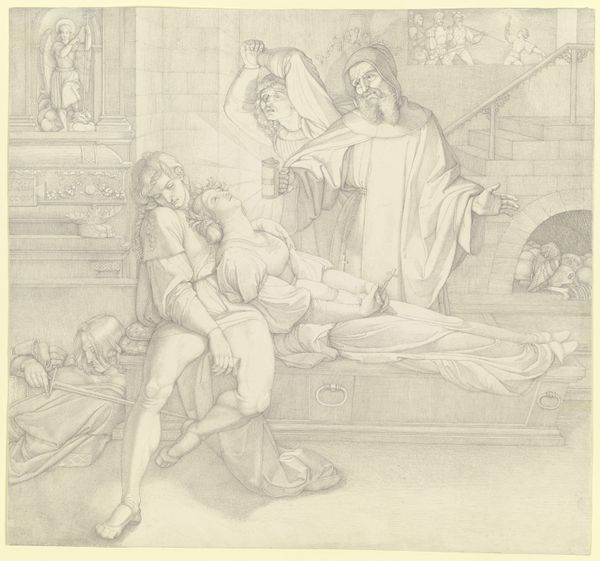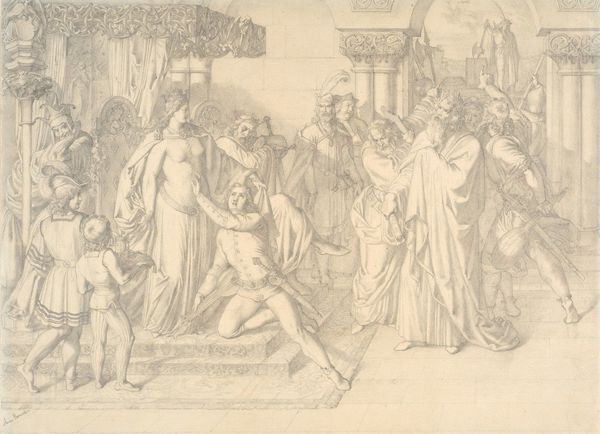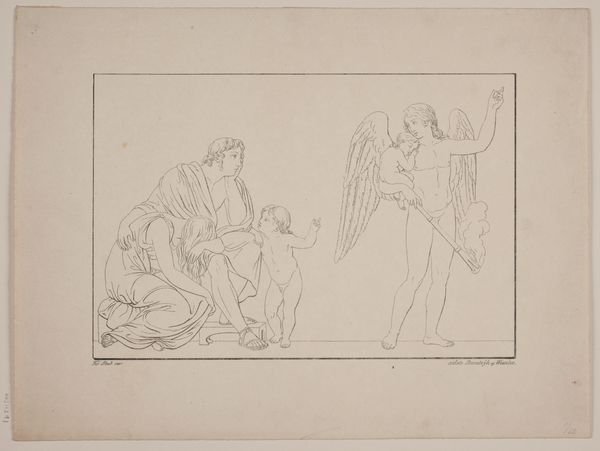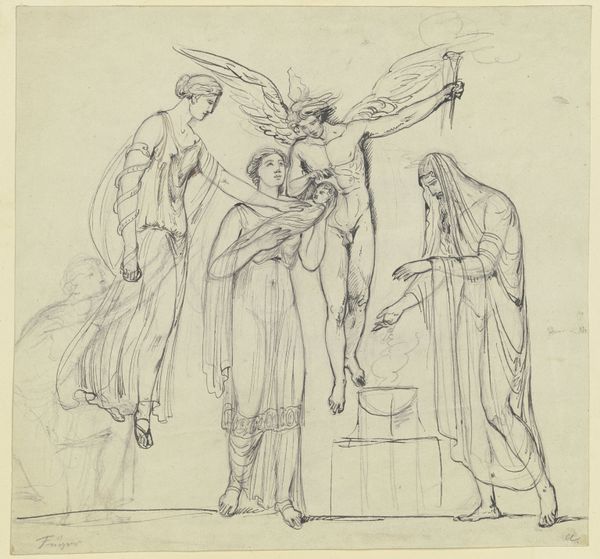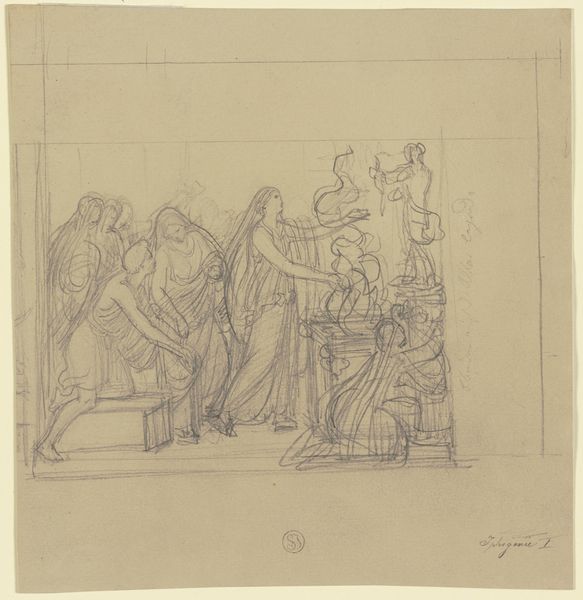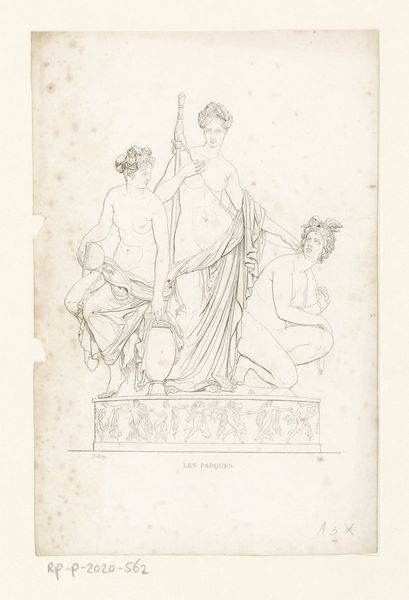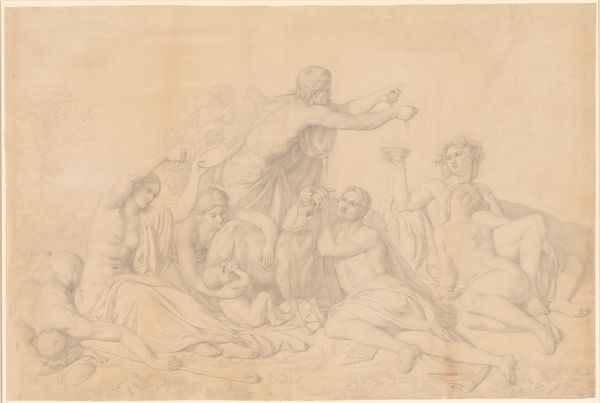
Virtus schreibt den Namen Karls auf den Schild der Stadt Frankfurt_ Entwurf für ein Denkmal für Karl von Dalberg c. 1810
0:00
0:00
drawing, ink, pencil
#
portrait
#
drawing
#
neoclacissism
#
allegory
#
classical-realism
#
figuration
#
ink
#
german
#
pencil
#
line
#
history-painting
#
academic-art
Copyright: Public Domain
Curator: Before us, we have Peter Cornelius’s drawing, circa 1810, "Virtus schreibt den Namen Karls auf den Schild der Stadt Frankfurt_Entwurf f\u00fcr ein Denkmal f\u00fcr Karl von Dalberg," now held at the St\u00e4del Museum. Editor: It’s stark. The spareness of line gives it a raw, immediate feel, almost as if we're privy to the very moment of its creation. The figures feel…unfinished, exposed. Curator: The drawing serves as a study, intended as the model for a monument dedicated to Karl von Dalberg, Archbishop-Elector of Mainz. It deploys neoclassicism, imbuing political themes within the visual language of allegory. Think about the post-revolutionary fervor in Germany at the time. Editor: Right, neoclassicism functioned as this visual echo of the Roman Republic, but why wrap Dalberg in this aesthetic? I'm especially drawn to the central female figure of Virtus herself, so rigidly idealized, her crown like some austere civic building. Who do you imagine her to be and is there significance behind her stern gaze and positioning in the artwork? Curator: As an embodiment of civic virtue, Virtus underscores the supposed ideal leadership. Cornelius is employing potent symbolism of renewal here. The two flanking putti represent historical narrative versus nascent identity in this particular German landscape. Notice the tablet in which “Carl” is writ. Editor: Indeed, the choice of inscription style is very Roman. These cherubic figures seem trapped between that past, which we know to be an imagined, aestheticized ideal, and the real, modern landscape around them. Also note the use of classical-realism to really solidify those themes visually. Curator: The tension, of course, lies in the real implications of celebrating such figures. Karl von Dalberg was very controversial, due to the complex social and political narratives that shaped his leadership style. Editor: The weight of historical context adds to the drama in this image. Viewing the image anew, I now detect subtle shadows which deepen and complicate its narrative thrust, creating a stark but fascinating visual experience. Curator: Yes, it speaks volumes about power, identity, and representation through the language of its era. It reminds us to consider how history shapes our understanding of art. Editor: Definitely, I can see how art like this operates as both a reflection of and a shaper of cultural values. It helps reveal collective desires, anxieties, and aspirations embedded within past and present ideologies.
Comments
No comments
Be the first to comment and join the conversation on the ultimate creative platform.
